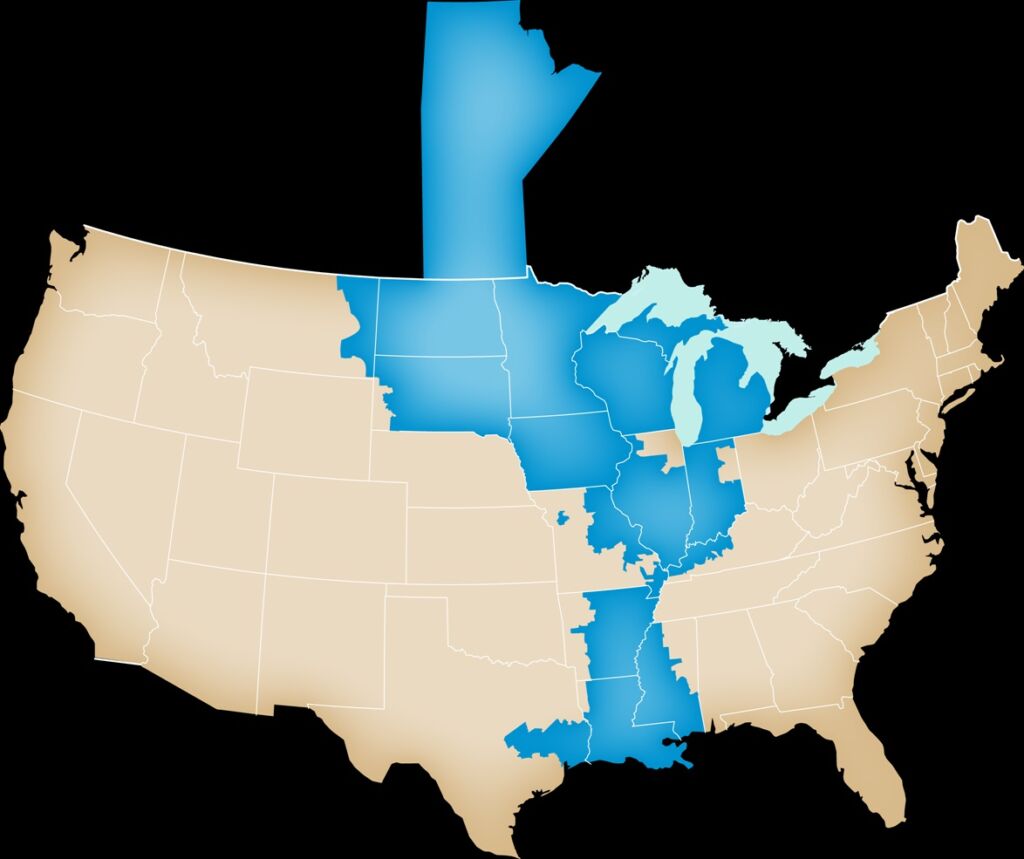North Dakota power plant will keep burning clean, beautiful coal
Yesterday, news broke that the Coal Creek Station, a 1,150-megawatt power plant that is the largest electricity generator in the state of North Dakota, has found a new buyer, which means the plant will continue to burn beautiful clean coal far beyond 2022.

The announcement is good news for the reliability of the entire regional grid, the Midcontinent Independent Systems Operator (MISO), which has already been stressed several times this year, first by the Polar Vortex of February, and more recently due to warm temperatures and low wind speeds.
In fact, during the past several days, electricity generation from wind turbines and solar panels has been minimal due to low wind speeds and cloudy skies throughout the entire MISO footprint, which includes portions of 15 states and one Canadian province, which you can see in blue in the map below.

Despite the big geographical footprint of MISO, the wind wasn’t blowing anywhere.
As a result, oil — which is usually only used as a fuel of last resort — has provided more electricity than wind or solar power in the MISO footprint. The lights have stayed on thanks to coal, natural gas, and nuclear power, according to the U.S. Energy Information Administration.

The data clearly show that keeping Coal Creek up and running is vital to maintaining the stability of the entire regional grid, which is important for all Minnesota families and businesses.
For example, in June of 2021, the supply of electricity on the MISO grid was so low that iron ore mines in Northern Minnesota were forced to idle some of their production lines to reduce the risk of rolling blackouts. These power interruptions would be worse if Coal Creek were allowed to close because it would reduce the amount of reliable electricity on the grid.
Not only is the sale of Coal Creek good for the reliability of the entire electric grid, but it is also welcome news to the communities in North Dakota that rely on coal mining and the power generating industry for jobs. A Facebook group called Faces of North Dakota Coal highlights the stories of these people and their concerns about the announced plant closure.
Not everyone will be happy about the news, however. WInd and solar special interest groups were hoping the plant would close and that the transmission line connected to the plant would be used to transport electricity from North Dakota wind facilities to Minnesota.
These groups convinced themselves that coal was no longer competitive with other energy generation sources. In fact, Michael Noble, the Executive Director of the intentionally misleading wind and solar advocacy group Fresh Energy, had told the Star Tribune:
Michael Noble, head of St. Paul-based renewable-power group Fresh Energy, doubts the plant has a future. Great River is closing Coal Creek precisely because it has been losing money as coal-fired power has become increasingly less competitive across the country.
“There’s nothing that a new owner can do that can change that,” Noble said.
Apparently, Rainbow Energy — the company that purchased the plant — was willing to bet good money to the contrary, and for good reason.
According to S&P Global Market Intelligence, the Coal Creek Station produced energy 91 percent of the time at a cost of $21 per megawatt-hour in 2018, making it one of the most efficient and affordable power plants in the entire country.
The sale of Coal Creek is good news, and Great River Energy should be applauded for being patient and finding a buyer. The sale maintains the backbone of North Dakota communities, and the electricity generated by the plant provides a reliable, affordable foundation on which to build a strong Minnesota economy.
Photo credit: Great River Energy / Special to The Forum